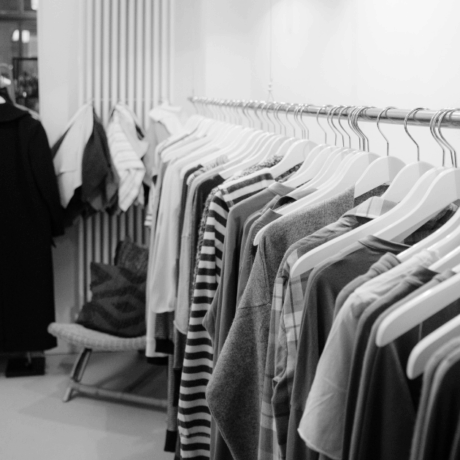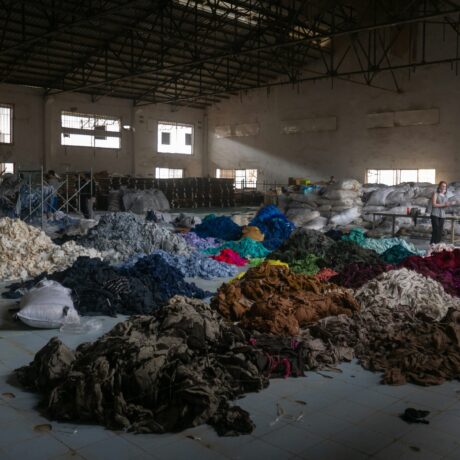Refashioning the Future
Fashion has always been fluent in fantasy. But what happens when fantasy turns survivalist?
We are living in a time when the old promises of fashion – novelty, beauty, identity – collide with new imperatives: climate resilience, resource scarcity, systemic justice. Out of this collision comes a series of radical experiments: garments that live only in pixels, fibres spun from industrial waste, dyes brewed in petri dishes.
They are dazzling, yes, but deeply political. Each innovation poses the same urgent question: can fashion reimagine itself fast enough to outpace the crises it helped create?
Digital Couture & the Carbon-Free Runway
Once, the runway was a floor, not a file. Today, it might just be a server.
Digital fashion – whether AR try-ons, metaverse couture, or in-game skins – promises more than spectacle. It offers subtraction: no cotton fields drained, no dye effluent spilled, no carbon-heavy returns piling up in warehouses. The fantasy is real – only the fabric isn’t.
In Australia, researchers at RMIT are exploring VR tools for designers, while globally, studios like The Fabricant have declared their allegiance to pixels over polyester, by leaning into digital fashion initiatives. The implications are profound: if identity is increasingly performed online, could our wardrobes shrink in reality and expand infinitely in digital space? Or will we end up with double the wardrobes -one physical, one virtual?
The answer may decide whether digital couture is liberation from overproduction, or simply its next frontier.
Adaptive Clothing for Climate Resilience
In the era of climate volatility, clothing must evolve from accessory to armour.
Imagine textiles that cool you under extreme heat, reflect UV rays at noon, or wick away sudden humidity. These aren’t hypotheticals. Australian scientists are trialling heat-reflective coatings; elsewhere, responsive fibres shift structure with the weather.
This is fashion as infrastructure: garments that are both unique and utilitarian. Yet here too lies a tension. Will adaptive textiles be equitably accessible, or marketed as luxury novelty? In a world where those most vulnerable to climate extremes often have the least access to innovation, resilience cannot become another form of exclusivity.
Upcycling the Unexpected
Sustainability has long preached restraint – fewer clothes, less waste. But there is another narrative unfolding: reinvention.
Designers are turning industrial detritus into couture: brewery by-products become durable yarns, orange peels transform into leather, pineapple leaves into the leather-like material Piñatex, coffee husks into soft, resilient textiles – and even aircraft seat foam is repurposed into handbags, cushions, and insulation. The alchemy is astonishing: what was once landfill now walks the runway.
This is a redefinition of the value of recycling. Waste is not objective; it is a label. Call it ‘waste’ and it is buried. Call it ‘material’ and it enters the economy. These processes not only divert waste from landfill, but also reduce reliance on resource-intensive cotton and petroleum-based synthetics.
The lesson? Waste is not an endpoint. It is a narrative pivot.
Biofabricated Colour
Dyeing has always been fashion’s silent violence – rivers turned toxic, workers exposed to carcinogens, ecosystems awash with waste. Enter the microbial revolution.
Algae, bacteria, and fungi are now coaxed into producing colour – hues as vivid as chemical dyes, but without the ecological hangover. Startups like Colorifix, for instance, use DNA coding to teach microbes how to reproduce pigments found in nature, while Pili is developing bio-based indigo for denim – one of the industry’s most polluting staples. In Australia, researchers are trialling algae systems that can generate stable, scalable colour without chemical runoff.
The symbolism is powerful: colour, once a pollutant, reborn as life. But scaling remains the challenge. Will biofabricated colour stay in the realm of high-concept capsules, or can it disrupt the toxic mainstream of fast fashion?
Innovation alone is not a silver bullet. A lab-grown dye cannot offset overproduction; a digital dress cannot erase systemic injustice. What these innovations do offer is a glimpse of possibility – a chance to rethink the very rules of fashion.
Pixels, polymers, microbes, and repurposed scraps – they’re not gimmicks. They’re a manifesto. Proof that fashion can be resourceful without being reckless, imaginative without being indulgent, and forward-thinking without leaving the planet behind. Though they won’t solve the industry’s problems overnight, they map a new direction – showing that style and responsibility can coexist, and that the next chapter of fashion could be as ingenious as it is indispensable.








